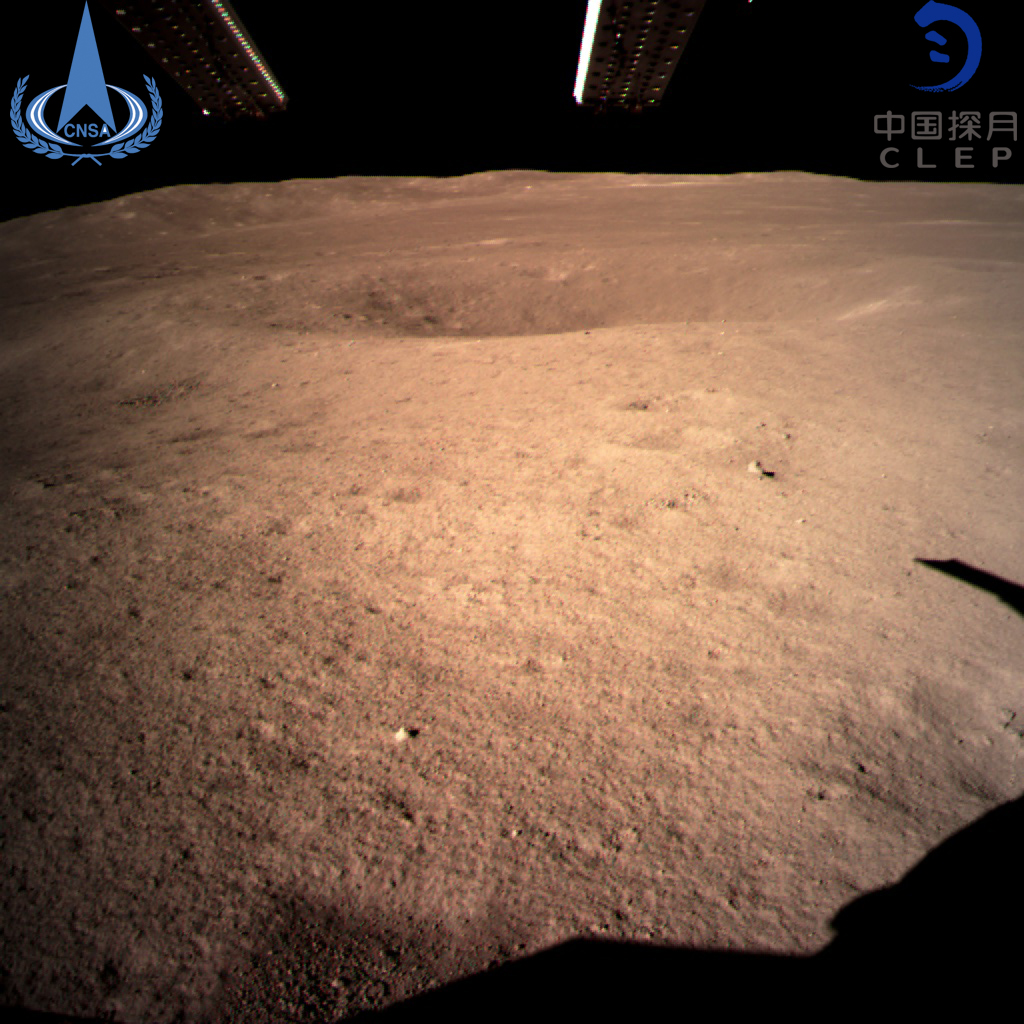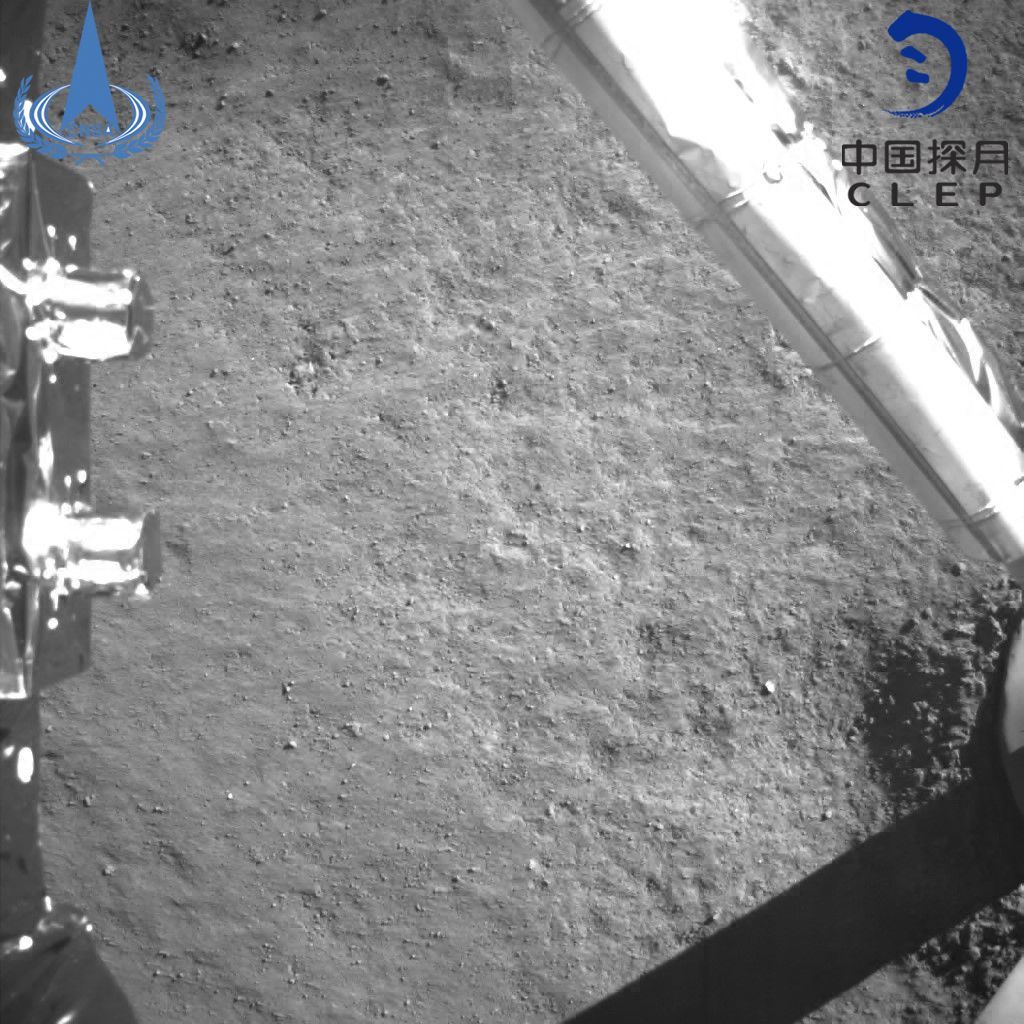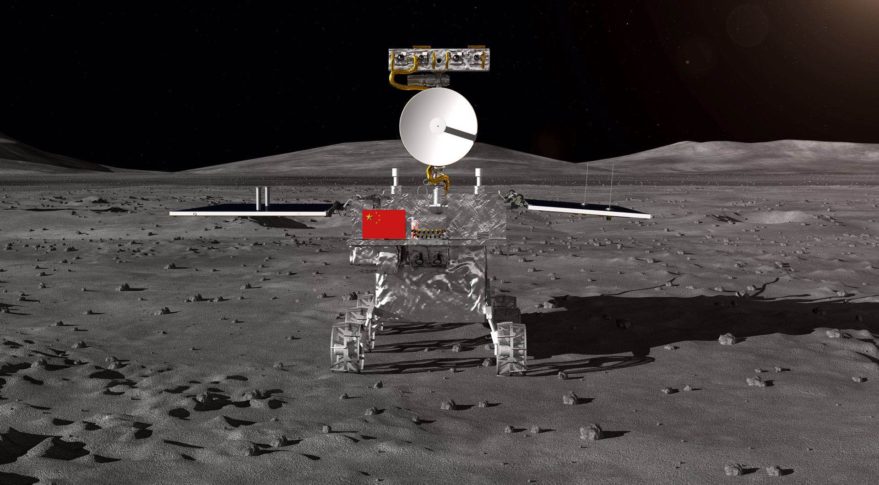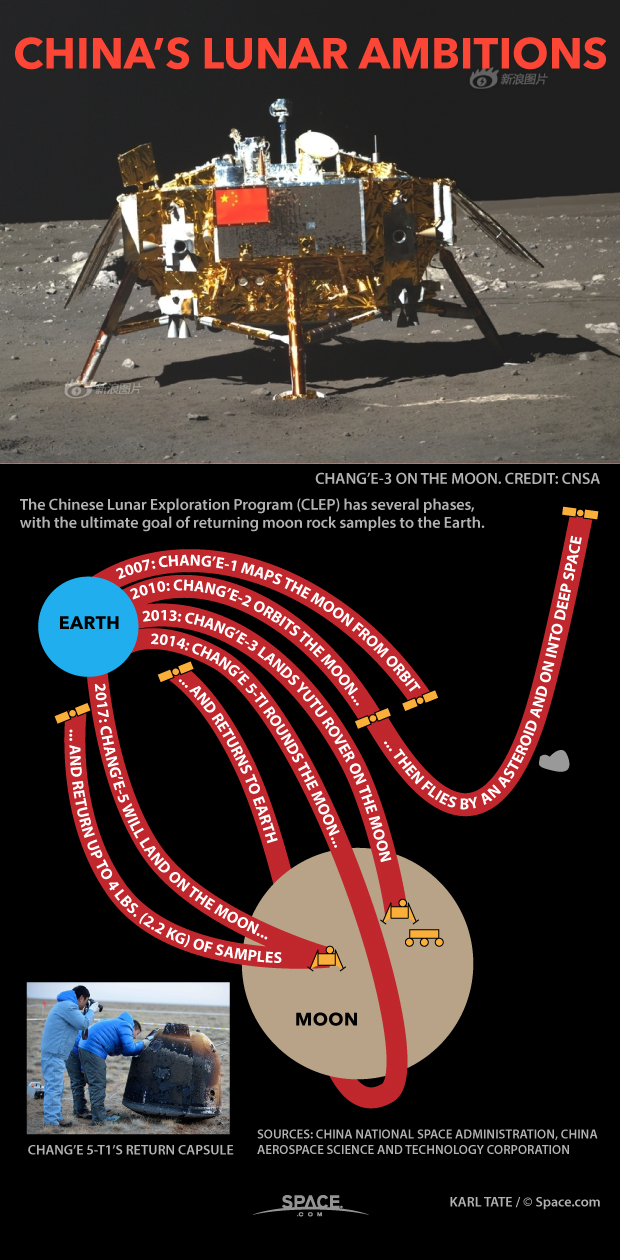China's Chang'e 4 Returns First Images from Moon's Farside Following Historic Landing
HELSINKI, Finland — China's Chang'e-4 spacecraft made the first ever soft-landing on the far side of the moon Wednesday (Jan. 2) in a mission investigating the history of the solar system and paving the way for future exploration.
The 1,200-kilogram dry mass Chang'e-4 lander touched down at 177.6 degrees east longitude and 45.5 degrees south within Von Kármán crater at 9:26 p.m. Eastern, according to an announcement from the China National Space Administration (CNSA).
The spacecraft began its descent at 9:15 p.m. from a perilune of 15 kilometers with a burn of its single main variable thruster before entering approach, hazard avoidance and slow descent phases, with a descent camera returning images of the approaching surface. [China's Chang'e 4 Moon Far Side Mission in Pictures]
The lander and the companion 140-kilogram rover, which is expected to be deployed within the coming hours, will work toward science goals including analyzing the lunar surface and subsurface composition, assessing the radiation environment and its interaction with the regolith and low frequency radio astronomy, as well as returning high-resolution images from terrain and panoramic cameras.

The 186-kilometer-diameter Von Kármán crater containing the landing site is situated within the 2,500-kilometer-wide South Pole-Aitken (SPA) basin, which is one of the oldest and largest impact craters in the solar system.
The basin could contain exposed material from the moon's upper mantle and promises clues to the history and development of the solar system. A sample return from the SPA basin has been noted as a priority in past U.S. Planetary Science Decadal Surveys.
The mission launched Dec. 8 and had been in lunar orbit since Dec. 12, where it tested communications and refined its orbit in preparation for a landing timed to follow sunrise over the target site, allowing the mainly solar-powered craft to begin operations immediately.
Get the Space.com Newsletter
Breaking space news, the latest updates on rocket launches, skywatching events and more!

Chang'e-4 is the repurposed backup spacecraft to the Chang'e-3 mission, which landed on Mare Imbrium on the near side in December 2013, making China only the third country to soft-land on the moon.
While the Chang'e-3 rover, on which the Chang'e-4 is based, traveled just 114 meters before being rendered immobile on Mare Imbrium in early 2014, officials with the China Academy of Space Technology (CAST), the spacecraft's manufacturer, have stated that the issue has been identified and addressed and that the new rover has been upgraded for greater reliability and longevity.
The landing comes ahead a wave of renewed interest in lunar exploration, with NASA, ESA, Russia, India and private companies working on a range of missions.
The China Aerospace Science and Technology Corporation (CASC) also announced Wednesday that it plans to launch the Chang'e-5 near side sample return mission with the second of two planned Long March 5 heavy-lift rocket launches in 2019.
Far side communications and landing challenges

Targeting the far side of the moon, which due to tidal locking never faces the earth, required the prior launch of a relay satellite to the second Earth-moon Lagrange point some 65,000-85,000 kilometers beyond the moon to facilitate communications.
Named Queqiao ('Magpie bridge' from Chinese mythology), the satellite has been in a halo orbit around this gravitationally stable libration point since June, from which has constant line-of-sight with both the terrestrial tracking stations—situated in China, Namibia and Argentina—and the lunar far side.
Apollo 17 Crew member and geologist Harrison Schmitt had recommended the final mission of NASA crewed landing program target the Tsiolkovskiy crater on the far side using a relay satellite, but the suggestion was rejected on grounds of risk and cost.
The more rugged and variable lunar far side topography and near absence of dark, basaltic plains or maria, demanded upgrades to the Chang'e-4 guidance, navigation and control systems, a much smaller landing footprint and more vertical and accurate powered descent than the predecessor mission.
The landing will also assist in the execution of the country's future lunar exploration plans, including sample returns and polar landings in preparation for a potential human outpost.
Ian Crawford, professor of planetary science and astrobiology at Birkbeck, University of London, told SpaceNews ahead of the event that a safe landing would be a "fantastic achievement."
"This will give valuable information on the composition of the far side crust and, conceivably, the upper mantle…The radio astronomy experiments are also of great interest, which may lay a foundation for the development of lunar far side radio astronomy," Crawford said.
Chang'e-4 science goals

Robert F. Wimmer-Schweingruber of the University of Kiel, Germany, which led the development of the Lunar Lander Neutrons and Dosimetry (LND) experiment, told SpaceNews that LND can, "help us understand the radiation which lunar soils and rocks are exposed to and to detect sub-surface water."
"Its main purpose, however, is to prepare for human exploration of the moon by measuring the radiation to which astronauts will be exposed," says Wimmer-Schweingruber, and specifically the neutron dose rate on the surface of the moon.
LND is one of four international payloads involved in the Chang'e-4 mission, along with the Advanced Small Analyzer for Neutrals (ASAN) from Sweden aboard the rover, the Netherlands-China Low-Frequency Explorer (NCLE) on Queqiao and a small camera on the Longjiang-2 microsatellite.
James Head, a planetary scientist at Brown University in Providence, Rhode Island, told SpaceNews in December that the Lunar Penetrating Radar (LPR), an instrument also aboard the Chang'e-3 rover, will provide images of the structure of the lunar soil layers and any subsurface lava flow units.
The Visible and Near-Infrared Imaging Spectrometer (VNIS), likewise installed on the mobile rover, will allow analysis of the mineralogy of the floor of Von Kármán crater and ejecta delivered by later, nearby impacts, according to Head.
The Low Frequency Spectrometer (LFS) payload on the Chang'e-4 lander will make astronomical observations in low frequency bands in a unique radio-quiet environment free of interference from the earth.
Another payload included in the mission through an outreach initiative is a small biosphere containing Arabidopsis and potato seeds along with silkworm cocoons, designed and developed in collaboration with 28 Chinese universities.
The experiment will be a pioneering test of photosynthesis and respiration in the one-sixth Earth gravity lunar environment, with a possible live steam to the 3-kilogram, 0.8-liter capacity cannister.
Anna-Lisa Paul, space biologist and research at University of Florida-Gainesville, told SpaceNews that the experiment will be unique, despite awealth of experiments that have grown plants and invertebrates in habitats on the Space Shuttle, the International Space Station, MIR, Skylab and others.
"We already know that plants, including Arabidopsis and potato, and silkworms do just fine in the microgravity of the spaceflight environments, so a climate-controlled biosphere on the surface of the moon will probably be reasonably benign, yet it is huge from the perspective that it has not been done."
This story was provided by SpaceNews, dedicated to covering all aspects of the space industry.
Join our Space Forums to keep talking space on the latest missions, night sky and more! And if you have a news tip, correction or comment, let us know at: community@space.com.

Andrew is a freelance space journalist with a focus on reporting on China's rapidly growing space sector. He began writing for Space.com in 2019 and writes for SpaceNews, IEEE Spectrum, National Geographic, Sky & Telescope, New Scientist and others. Andrew first caught the space bug when, as a youngster, he saw Voyager images of other worlds in our solar system for the first time. Away from space, Andrew enjoys trail running in the forests of Finland. You can follow him on Twitter @AJ_FI.










